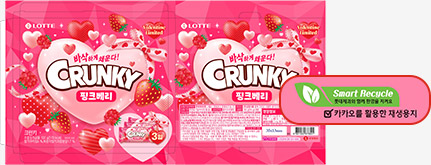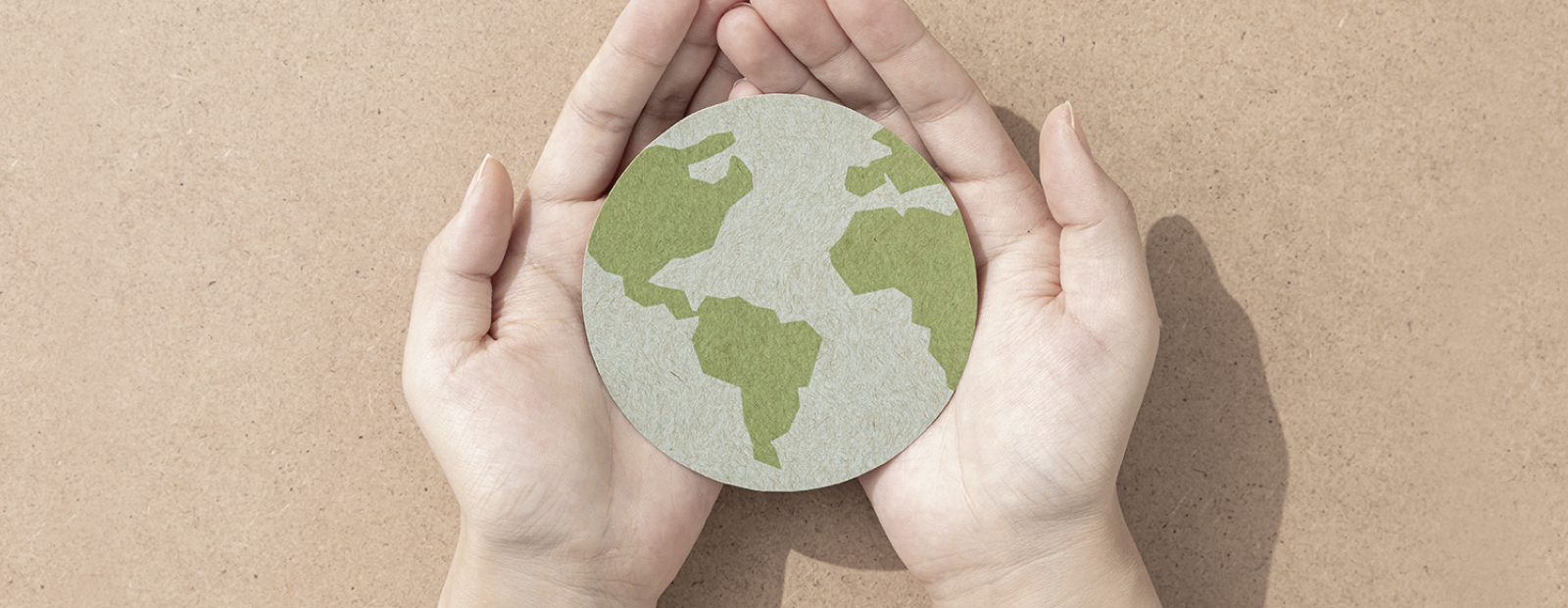

Environmental Management
-
Environmental Management System [ISO14001]- Requires regular reviews and measures on environmental management system- Must pay attention and take corrective action in the company-wide environmental management system in the future
-
Energy savings- Continued improvement to reduce GHG emissions- Energy savings through the introduction of eco-friendly and high-efficiency equipment
-
Joined the voluntary agreement between the Ministry of Environment and the food industry- Concluded a voluntary agreement to improve packaging materials and structure (April 27, 2018)- "Green Mileage Campaign" for reducing promotional product packaging
-
Wastewater management- Preventing contamination of rainwater pipe by wastewater overflow: installation and regular management of drainage filter- Concluded a voluntary agreement to reduce excessive packaging (September 10, 2020)
-
Waste reuse- Improving the on-site environment, preventing external exposure of waste
corporate activities on the environment and preserves the surrounding environment to pass on the beautiful, pristine nature to our future generations.
-
01We recognize the environment as a top priority, prevent pollution, and minimize pollutant emissions.
-
02We comply with all environmental laws and regulations, set more stringent internal standards, and implement them in good faith.
-
03We save energy and materials and strive to establish an eco-friendly corporate culture through recovering resources and recycling.
-
04We constantly improve our working environment through systematic management based on ISO14001 Environmental Management System.
-
05We share environmental policies and information with the stakeholders as necessary to ensure the transparency and reliability of environmental management.
of raw materials
LOTTE Wellfood joined RSPO(Roundtable on Sustainable Palm Oil) in December 2022
to expand the use of responsible palm oil and build a more sustainable supply chain.
We will further expand the purchase and supply of certified palm oil through strict standards and due process.
Sustainable palm oil supply chain supported by LOTTE Wellfood
- · Minimize input of resources such as soil, water, energy, etc.
- · Minimize pollution of water, air, greenhouse gases, etc.
- · Protect peatlands, which play a vital role on Earth in terms of carbon storage and biodiversity conservation
- · Protect the entire forest by specializing in forest management with HCV(high conservation value) and HCR(high carbon stock)
- · Respect worker's rights and protect communities in accordance with the UN's international human rights law and related domestic laws
- · Protect workers' livelihoods and improve working conditions through responsible production, education, safety and health services
- · Supporting the inclusion of small farmers in sustainable palm supply chain and aiming for transparent tracking
- · Proactively manage potential risks within the supply chain
LOTTE Wellfood's representative snack product, Kokkal Corn(original flavor, 67g), has obtained EPD(Environmental Product Declaration), a product environmental impact certification system by the Ministry of Environment, and discloses seven environmental impacts including carbon footprint and water footprint.
Download EPD Data of Kokkal Corn
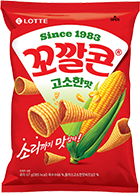
eco-friendly packaging
To meet today's global demands for sustainability, LOTTE Wellfood has established a
strategic direction of eco marketing, through which waste from packaging materials is reduced in
consideration of the environment and society.
Our eco-friendly packaging strategy, the Sweet Eco 2025 project, seeks to generate performance in three
directions: reduction of plastic use, eco-friendly printing, and utilization of byproducts.
We will continue our efforts to implement the Sweet ECO 2025 KPI by developing technology through
cooperation with the LOTTE R&D Center, cooperating and creating networks through MOUs with partners such
as Hansol Paper, and strengthening collaboration and communication with in-house ESG-related
departments.
To help create a sustainable circular economy, we are further reviewing the increased use of recycled
plastics, employing bio-biodegradable packaging materials, and applying fewer packaging to products.
플라스틱
저감
용기, 트레이에 사용하는
플라스틱의 25% 저감
친환경
인쇄 지향
포장재 인쇄에 사용되는
잉크, 용제 550ton 저감
부산물
활용
원자재/식품 부산물로 만든
친환경 종이 포장재 4,200ton 사용

-
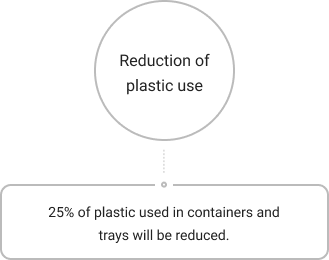
01 Tray change
All plastic buffers used in bulk-sized products such as Custard will be replaced with paper-based materials.02 Packaging container change
Plastic cup packaging for products such as Kancho and Cereal will be replaced with Replacing paper-based materials.03 Utensil change
Accessories such as plastic forks in Chaltuk Ice will be replaced with wooden forks. -
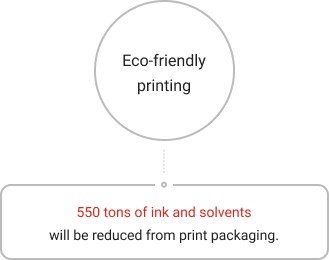
01 Simplification of packaging design
Packaging design will be simplified and lower color format will be used to reduce ink and solvent consumption.02 Printing method change
The packaging printing will be changed from gravure to flexography. - Flexography Unlike gravure printing, flexography uses the engraved printing method to reduce ink consumption. Because it can be applied to non-copper plates, it does not require organic solvents that are essential for printing conventional packaging. -
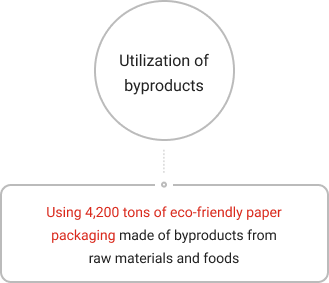
01 Cacao Cardboard
Eco-friendly paper made by processing cacao fruit byproducts, which are discarded after producing chocolate, into powder and mixing with recycled pulp
used in containers and trays
· Packaging material consumption (weight) (Unit: ton)
| Classification | 2018 | 2019 | 2020 |
|---|---|---|---|
| Plastic in containers/trays | 3,305 | 3,320 | 3,162 |
※ Based on EPR (Extended Producer Responsibility)
· Plastic reduction plan
| Classification | Reduction amount (target) | Key products |
|---|---|---|
| Tray change | 567 ton | Custard, Ummason Pie, etc. |
| Packaging container change | 207 ton | Kancho, Cereal, etc. |
| Utensil change | 33 ton | Chaltuk Ice, etc. |
| Total | 807 ton | Annual consumption: 3,305→2,498 ton |
By the end of this year, plastic trays for Custard will be replaced with paper materials, and plastic containers for products such as Kancho and Cereal are also under review for change into paper materials.
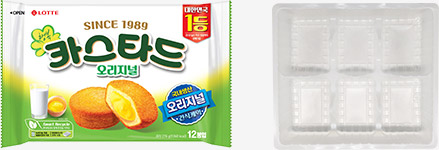
used to print packaging
| Classification | Reduction amount (target) | Key products | |
|---|---|---|---|
|
Simplification of packaging design |
Ink | 150 ton | 15 items, including Mon Cher |
| Solvent | 120 ton | ||
| Printing method change | 280 ton | ||
| Total | 550 ton | Aggregation from reduction target items | |
* Not the reduced amount of ink and solvents used in the entire flexible packaging
This year, we partially replaced packaging for Custard and Chic Choc with eco-friendly ink and reduced ink usage.
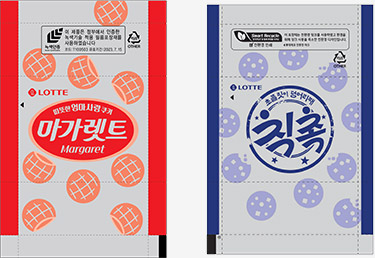
made of byproducts from raw materials and foods
| Classification | Usage (Target) | Key products |
|---|---|---|
| Byproduct-based paper | 4,200 ton | Ghana Chocolate, etc. |
Using the cacao byproduct paper developed through cooperation of Hansol Paper, LOTTE Wellfood, and LOTTE R&D Center, we plan to continue efforts to release eco-friendly products with higher byproduct content in the packaging.
